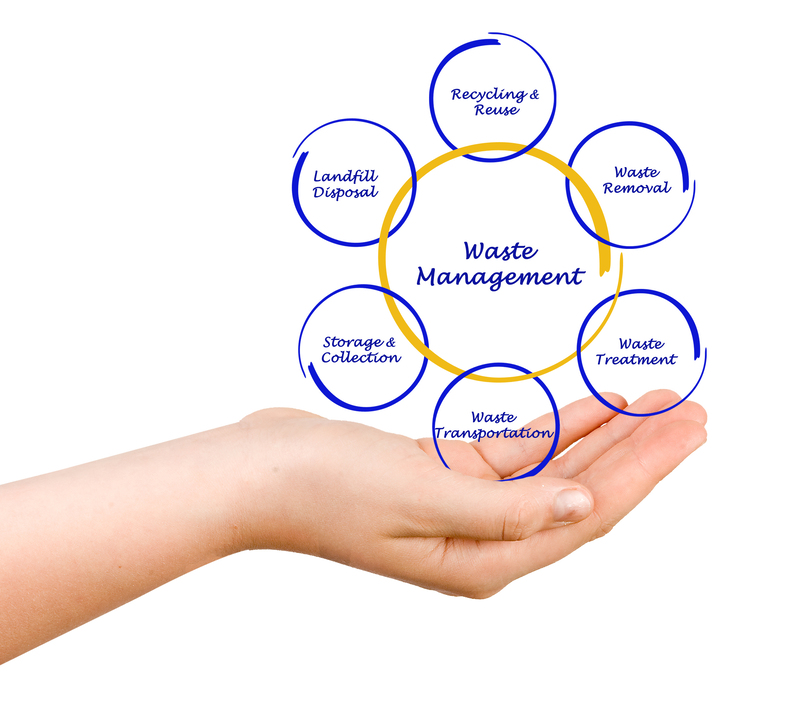Removing Bricks and Construction Waste
Posted on 05/11/2024
Introduction
Removing bricks and construction waste is an inevitable aspect of construction work. Whether you're demolishing a wall, renovating a home, or managing a large-scale building project, handling and disposing of construction debris properly is crucial. Proper disposal not only ensures a tidy workspace but also complies with local regulations, thereby avoiding potential fines. This comprehensive guide will cover everything you need to know about removing bricks and construction waste efficiently and safely.

Why Proper Construction Waste Management is Essential
Proper waste management is essential for several reasons. Firstly, it maintains a clean and organized work environment, increasing worker safety. Loose debris can cause accidents, leading to injuries or even fatalities. Secondly, proper waste disposal minimizes the impact on the environment. Construction materials can often be recycled or repurposed, reducing the strain on landfills. Lastly, adherence to local regulations is vital. Non-compliance can result in hefty fines and project delays, affecting the overall profitability and timeline of the construction project.
Types of Construction Waste
Understanding the different types of construction waste is the first step toward effective management. Here are some common types:
1. **Bricks and Masonry**: These materials are often used in building structures. While reusable, they need proper handling.
2. **Concrete**: Leftover concrete poses disposal challenges but can often be recycled.
3. **Wood**: Scrap lumber can either be reused or chipped for other applications.
4. **Metals**: These can include steel, copper, and aluminum, which are excellent candidates for recycling.
5. **Drywall and Plaster**: These materials often end up as waste during renovation projects.
6. **Plastics**: Commonly used for piping, insulation, and packaging materials.
Steps for Removing Bricks and Construction Waste
1. Plan Ahead
Before you begin your demolition or construction work, prepare a plan for disposing of your waste. Identify a designated area for collecting debris and ensure you have the necessary disposal bins and bags.
2. Separate Waste
Sorting your waste into categories like bricks, wood, metal, and plastics can make recycling and disposal more efficient. It also makes the job easier for waste management companies.
3. Use the Right Equipment
Ensure you have the right tools for the job. For bricks and heavy materials, you may need a wheelbarrow or a dumpster. For smaller debris, heavy-duty garbage bags will suffice. Safety gear like gloves, goggles, and masks are also essential to protect yourself from hazardous materials.
4. Recycling and Reusing
Many construction materials can be recycled or repurposed. For example, bricks can be cleaned and reused in new construction, while metals can be sent to recycling facilities. This not only saves costs but is also environmentally responsible.
5. Efficient Disposal
Depending on the amount of waste, you might need to hire a professional waste removal service. These services have the expertise and equipment to handle large quantities of construction debris. Ensure they comply with local waste disposal regulations.
Tips for Removing Bricks and Construction Waste
- **Label Your Bins**: Clearly label disposal bins to make sorting easier.
- **Stay Organized**: Keep waste collection areas organized to prevent mix-ups and last-minute scrambles.
- **Regular Clean-Up**: Don't let debris pile up. Regular clean-ups can prevent accidents and make the final removal process smoother.
- **Hire Professionals**: For large projects, consider hiring professional waste removal services. They can handle both the removal and disposal, saving you time and effort.
Pros and Cons of Removing Bricks and Construction Waste
Pros
- **Safety**: Proper waste removal reduces the risk of accidents and injuries.
- **Environmental Benefits**: Recycling and reusing materials reduce the strain on landfills and minimize the environmental footprint.
- **Regulatory Compliance**: Adhering to local disposal regulations avoids fines and legal issues.
- **Efficiency**: A clean worksite is an efficient worksite, potentially speeding up project timelines.
Cons
- **Cost**: Proper waste removal can be expensive, especially if hiring professional services.
- **Time-Consuming**: Sorting and separating materials for recycling can take a substantial amount of time.
- **Logistics**: Coordinating the removal and disposal of waste can be complex, particularly for large-scale projects.
- **Local Regulations**: Navigating local disposal regulations can be complicated and time-intensive.

Takeaways
1. Proper planning and organization are key to effective construction waste management.
2. Separate your waste categories for easier recycling and disposal.
3. Use the correct equipment and safety gear to protect yourself and your team.
4. Consider the environmental impact of your disposal methods and aim to recycle or repurpose whenever possible.
Conclusion
Removing bricks and construction waste isn't just about keeping your worksite clean. It's about safety, environmental responsibility, and compliance with regulations. By planning ahead, staying organized, and recycling where possible, you can manage construction debris effectively and responsibly. While the process can be time-consuming and costly, the benefits far outweigh the drawbacks. Whether you're a DIY enthusiast tackling a home project or a professional managing a large-scale development, these guidelines will help you handle construction waste efficiently and safely.

 020 3875 4096
020 3875 4096 020 3875 4096
020 3875 4096




 House clearance
House clearance Rubbish collection
Rubbish collection London Rubbish Clearance is one of the most popular companies for
London Rubbish Clearance is one of the most popular companies for  Our company in London is all you need for professional rubbish collection! London Rubbish Clearance has lots of experience when it...
Our company in London is all you need for professional rubbish collection! London Rubbish Clearance has lots of experience when it...




